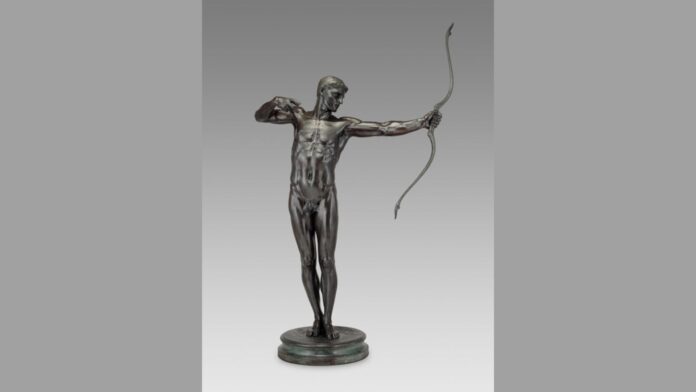When talking about art featuring the male body, art historian Ty Vanover poses the question, “Who knows what meaning can be read into these works by people viewing it?” Vanover will be taking a stab at answering that question through an online class at the Barnes Foundation this month. As part of Pride Month, the Barnes will be conducting an online only, all-day workshop entitled “Sexuality and the Modern Male Body.”
According to press materials from the Barnes describing the workshop, “The 19th century saw foundational shifts in the concepts of masculinity and male sexuality in European society. This online one-day workshop will chart how these changes surfaced in art of the period and into the 20th century. Drawing on queer, feminist and postcolonial theory, we will explore the art academies of neoclassical Paris, the studios of Victorian London, and the streets of Weimar Berlin to discover what artistic depictions of the male body can tell us about sexuality in modern Europe.”
The workshop will be conducted by Vanover, a visiting professor from Dickinson College. Vanover specializes in 19th- and early 20th-century Central European art and visual culture. His research focuses on drawing and the graphic arts within the context of German sexual science between 1869 and 1933.
Human nudity in art, particularly the male body, has engendered a complicated and often problematic discourse in recent centuries, much more so than the female nude. While the classical Greco-Romans revered and idealized the male body, in the Christian era, the Church usually strongly objected to any depictions that might provoke a sensualist response (Michelangelo, for example, was both praised and vilified for his male nudes). After the Renaissance, female nudity in art was much more common, usually regarded as unthreatening, an ideal of beauty. The male body, however, was seen as threatening, aggressive and discomfiting.
Vanover will be looking at how perceptions of the male body in art began a dramatic evolution.
“The male form came to be seen as serving one of two agendas,” Vanover said. “One was desirable, one less so. One was a political/propagandistic agenda, and a moral/sensualist agenda. The former started taking hold during the French Revolution, with depictions of big strong men seen as heroes of the Revolution. This depiction of strong, admirable, heroic men who were to be emulated was also prevalent in the propaganda art out of Nazi Germany and Soviet Russia.”
During that period, there were also artists who began to depict less of the political agenda and more of the moral/sensualist agenda. While these depictions were still of morally upright figures, they could also evoke a sensualist response—if you knew what to look for. One notable figure in this vein was late 19th century English artist Frederic Layton (who was “probably queer,” says Vanover, “but we don’t know for sure”), one of several possibly—or openly—gay artists who flourished in this period.
“Sexuality and the Modern Male Body” takes place online from 10 a.m. to 4 p.m. on June 20. For more information or to sign up, visit barnesfoundation.org.

